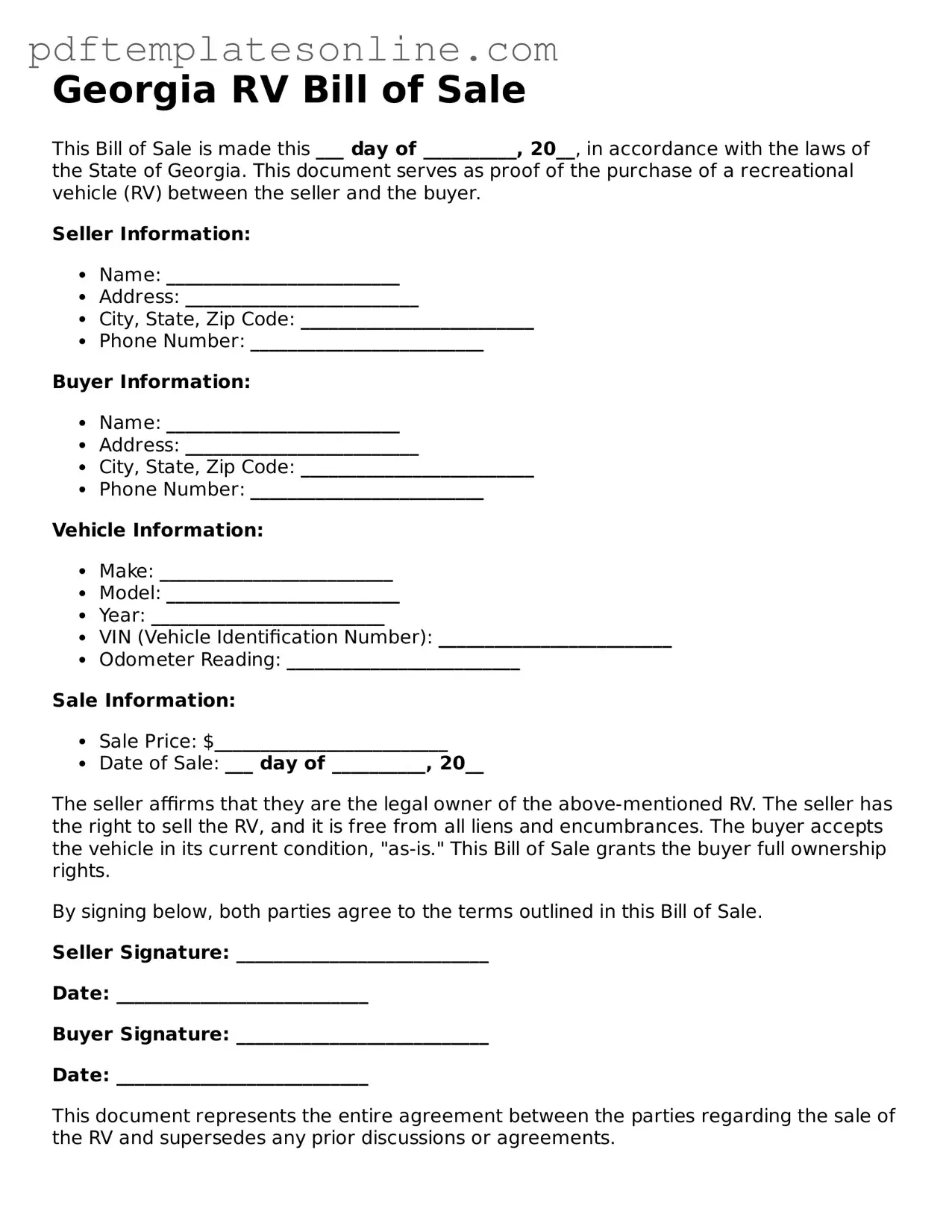Filling out the Georgia RV Bill of Sale form can seem straightforward, but many individuals make common mistakes that can lead to complications down the line. One frequent error is neglecting to include all required information. Each section of the form has specific fields that must be completed, such as the buyer's and seller's names, addresses, and the RV's details. Omitting any of this information can render the document invalid.
Another common mistake is failing to accurately describe the RV. It's essential to provide the correct make, model, year, and Vehicle Identification Number (VIN). Inaccuracies can lead to confusion and may even result in legal disputes. Buyers rely on this information to ensure they are purchasing the correct vehicle, so double-checking these details is crucial.
Some individuals forget to include the sale price. This is an important component of the bill of sale, as it establishes the transaction's value. Leaving this blank can raise questions about the legitimacy of the sale and may complicate future registration or titling processes.
Additionally, not signing the form is a frequent oversight. Both the buyer and seller must sign the document to validate the transaction. Without signatures, the bill of sale lacks legal standing, which can create issues if either party needs to prove ownership or resolve disputes later.
Another mistake involves the date of the sale. Failing to include the date can lead to confusion regarding when the transaction took place. This date is important for tax purposes and may affect the timeline for registration with the state.
People often forget to make copies of the completed bill of sale. After signing, it's wise to keep a copy for personal records. This document serves as proof of the transaction and can be crucial if any questions arise in the future.
Some buyers and sellers also overlook the need for notarization. While not always required, having the document notarized can add an extra layer of authenticity, especially for high-value transactions. It’s a good practice to check whether notarization is necessary for your specific situation.
Misunderstanding the difference between a bill of sale and a title transfer can lead to complications. The bill of sale serves as a record of the transaction, while the title transfer is what officially changes ownership in the eyes of the state. Ensuring both processes are completed is vital for a smooth transition of ownership.
Lastly, many individuals rush through the process without reading the entire form. Taking the time to review each section can help prevent errors and ensure that all necessary information is included. A thorough review can save time and trouble later on, making the entire transaction smoother for everyone involved.
